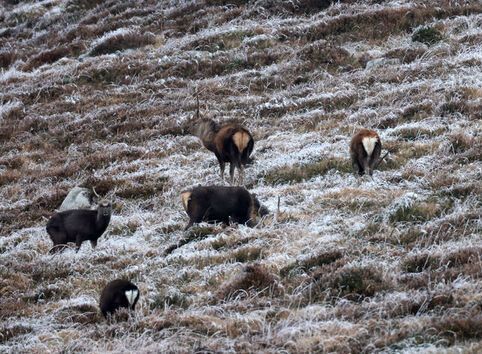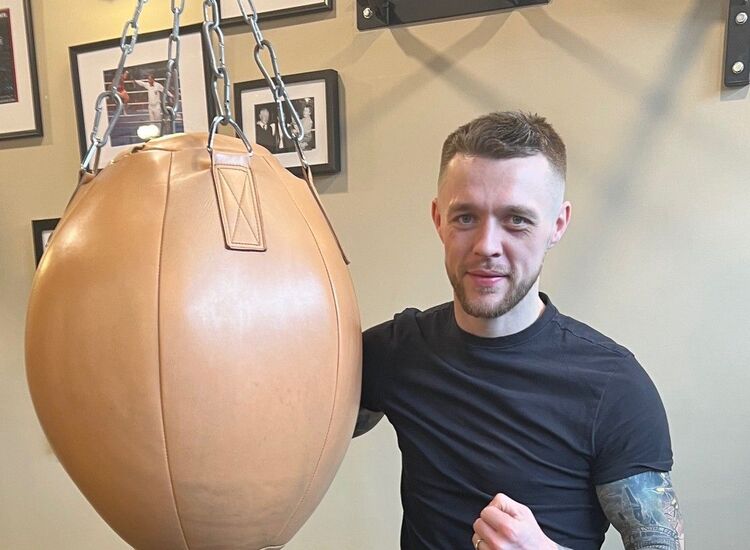In the classroom with some of the middle school students
By Denise Deegan
I have just touched down in Dublin after two weeks in New York City, researching my latest novel, “Before Brooklyn,” a tribute to children and one of my favorite cities.
It follows the story of an Irish American girl from Brooklyn whose path crosses that of a boy from the Bronx on a subway platform. It is a tale of family, loss, hope and the resilience of children.
For two weeks, I pounded the streets of Brooklyn and the Bronx, eavesdropped on conversations and rode the subway like a New Yorker.
I volunteered at an afterschool run by St. Ann’s Episcopal Church in Mott Haven, South Bronx, made famous by Jonathan Kozol in his books of non-fiction, “Amazing Grace,” “Ordinary Resurrections,” and “Fire in the Ashes,” which follow the lives of children and families in the area.
Young staff at St. Ann’s provide the attending children with a snack on arrival, then supervise reading, homework and play, and finally serve an evening meal.
It was an honor to be part of this wonderful service, working alongside amazing people, if only for two weeks.
I will remember the children and hold them in my heart for a very long time to come, each child as friendly, spirited, curious and welcoming as the next. I would like to return, perhaps to volunteer at the Summer Freedom School, which is staffed by young adults with the help of volunteers.
I also visited middle schools in the Bronx where I ran workshops designed to empower students to believe in themselves as storytellers.
My sessions focused on story rather than writing, as the latter can be intimidating to many. They were interactive and fun, while imparting an incredible amount of storytelling know-how.
It was refreshing to see the obvious joy the children took in self-expression, volunteering their views and experiences with confidence and enthusiasm. In Irish classrooms, there can sometimes be a reluctance to stick one’s head above the parapet.
Given that I’m Irish (and, by nature, curious), I asked the children what, if anything, they knew of Ireland.
Their answers were unexpected.
Of the tiny number of students in each class who knew about Ireland, their associations were two-fold: Conor McGregor and leprechauns. I felt obliged to broaden their knowledge base!
So, I found myself, as part of my research for one novel, relying on research I had done for another, “Through the Barricades,” my historical fictional account of the Easter Rising of 1916 and an Irish regiment in World War I.
Though based in the early 1900s, in order to really understand that period, and how we arrived at revolution, I had to research earlier history. I loved how this became useful in the Bronx when sharing Ireland with children.
As well as the basic geography, i.e. that Ireland is the most westerly country in Europe, making it the closest to the U.S., the children now know about British rule in Ireland, the harsh Penal Laws that still incense me, and the Great Famine that brought so many Irish to America.
Of course, I shared the wonderful statistic that though there are only six million people on the island of Ireland, there are forty million people in America with Irish blood.
The teachers I met were admirable in their commitment to the children.
They wanted as many as possible to experience the workshops. Demand was such that I found myself running five sessions back-to-back on one particular day. While tiring, it was also exhilarating. There is nothing like the energy and enthusiasm of children to lift one’s own energy. I very much hope to repeat this memorable experience.
In addition to volunteering at the after school and visiting middle grade schools, I workshopped the novel with a class of writing students at Lehman College in The Bronx.
These mature students read “Before Brooklyn” in advance of my visit so that we could discuss it together under headings such as characterization, plot, themes, imagery etc. I arrived at Lehman College at 6.30 p.m. one Tuesday evening not knowing how the students had received the story. They might have hated it.
I was totally unprepared for their enthusiasm, incredible insight, their commentary (often coming from a very personal place), their openness and generosity, and their interaction with the story. It was a truly magical experience. If I had come to New York for that alone I would have been more than happy. I will always remember that session, each individual student and their amazing professor, Joseph McElligott.
Perhaps the most bizarre and stretching thing I did during this visit was teach a class of performing arts students how to speak with an Irish accent. This was the brainchild of a friend who I did not want to let down. I accepted the challenge not at all confident I could deliver. I’m no voice coach.
Yes, I speak with an Irish accent, but instinctively. How would I teach one of the most difficult accents to emulate to a group of young New Yorkers? Another problem: the session was to be one and-a-half hours long. If I was going to fail, I was going to have to face them for a not insignificant stretch.
I began to study the Irish accent, how, in particular, there are certain syllables that we express in a very distinct way. It was interesting to dissect and become aware of something that is instinctive.
The question remained: would I be able to teach others to emulate how I speak? Then I had a Eureka moment. It occurred to me that playing an Irish character is about much more than simply sounding like one. It’s about understanding what it means to be Irish.
I decided to make the session interactive. I would share with the class what, in my opinion, it means to be Irish, focusing on two things in particular that I believe influence our outlook - our history and our weather.
While I was speaking, the class would listen, not just to what I was saying, but how I was saying it. They would jot down any words that they identified as different to how they spoke. We would then, together, discuss how their pronunciation differed from mine. I had no idea whether or not this would work.
As the time drew near for the class, another idea struck. I would feature clips from movies featuring accents from around Ireland, such as Cork, Dublin, and Northern Ireland. Then, if students wished to study them in more depth afterwards, they would have a list of movies to watch.
I chose “The Wind that Shakes the Barley” for the Cork accent, “Patriot Games” for the Northern Irish way of speaking, and “Sing Street” for the Dublin lilt. I would have chosen more - “The Commitments” and the “Father Ted” series - but I was cognizant of making my selections age-appropriate. In an effort to teach how not to speak, I also chose clips from old Hollywood movies featuring the stage-Irish accent.
The children listened attentively to the talk about Ireland, jotting down words that sounded different to them. They loved the insight this gave them into the psyche of a people. The ear they had for selecting the nuances in the Irish accent was incredible.
Once we had gone through all the words they had noted as different, I called out some pre-prepared sentences containing words that highlighted these differences. The class repeated them back with brilliantly subtle Irish accents. I was astounded.
Disconcertingly, for the rest of my stay I became hyperaware of my accent, of words I was saying as I was saying them, hearing syllables I was pronouncing so distinctly.
Finally, it was time to return home. There was so much I knew I would miss, the energy of New York City, the beauty of Central Park in fall, but most especially all the wonderful people I had met and come to know.
I don’t believe it’s the end, though. It’s just the beginning. I will be back.
Denise Deegan writes under her own name and also her pen name Aimee Alexander. You can find her at http://www.denisedeegan.com and http://www.aimeealexander.com








